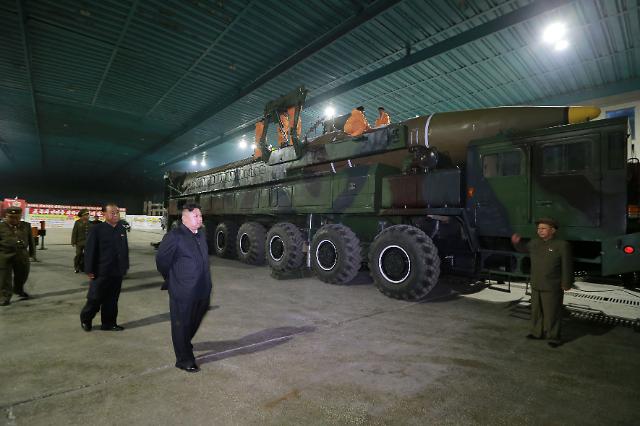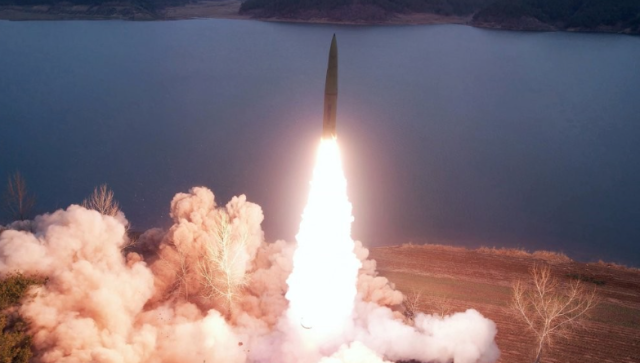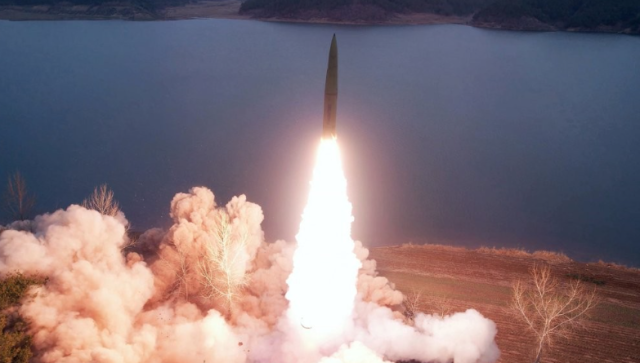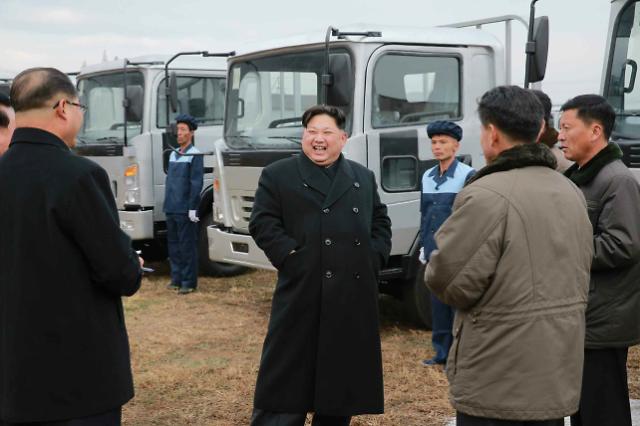
[Yonhap Photo]
North Korea is developing an intercontinental ballistic missile faster than expected but it will probably require another year or two of development to improve wartime reliability and accuracy, a US expert said.
Pyongyang claimed to have successfully tested a series of new ballistic missiles including the medium-range Hwasong-12, a variant of the existing Musudan missile, and the KN-08 with a longer range and its advanced version KN-14. Yet, experts have expressed doubts about the North's ability to develop a working reentry vehicle with a heat shield suitable for an ICBM.
If this week's test is true, this is a successful demonstration of a missile "with intercontinental range", John Schilling, a US expert, said in his article published by 38 North, the website of a US research institute.
"We had thought that we would have until perhaps early 2020 to prepare for a North Korean ICBM capability, but it turns out they were working on a different timetable," he said, admitting the speed of North Korea's missile development has betrayed expectations.
"However, it will probably require another year or two of development before this missile can reliably and accurately hit high-value continental US targets, particularly if fired under wartime conditions," said Schilling who has closely monitored the North's missile program.
In firing the new missile called "Hwasong-14", North Korea used a "lofted" trajectory to keep it from overflying neighboring countries. The expert suggested that if the missile were fired on a more efficient trajectory, it would reach a range of anywhere from 6,700 to 8,000 km.
"By any standard, this is the performance of an intercontinental ballistic missile," he said, adding that it could reach Hawaii and Alaska. "It is probably reasonable to consider this missile a variant of the previously-displayed KN-14, rather than an entirely new missile."
Schilling said the Hwasong-14, which was very similar to the KN-14 powered by a dual first stage engine, used a single main engine with four smaller verniers for control like one used in last month's test of the Hwasong-12.
"Indeed, given the timing, it looks very much like the Hwasong-12 was being used to develop and test key technologies for the Hwasong-14, minimizing the chance of a politically embarrassing failure in the first flight of a North Korean ICBM," he said.
Another key difference is that the upper stage and particularly the reentry vehicle have been reshaped while North Korea has either redesigned the original blunt reentry vehicle of the KN-14, or enclosed it in a hollow payload fairing, he said.
A payload fairing would modestly improve the aerodynamics of the missile in early flight, giving a small increase in performance. Payload fairings on ICBMs are used to cover multiple warheads and/or decoys and other penetration aids, but the North's new missile does not have the performance to carry multiple warheads or more than a very minimal set of decoys, the expert said.
If it was only partially successful, that may mean the North Korea has other homework to do, particularly if the missile failed to reach its expected degree of accuracy, as a missile needs to shut down its engine in a precisely-controlled fashion, he said.
It probably would not take more than a year or two to learn how to operate this missile reliably and accurately in combat, and to incorporate whatever design modifications or performance enhancements this test may call for, he said.
"For now, it is a more uncertain threat. But an uncertain threat to the US mainland can still be a powerful deterrent, and it probably won't take years for us to see the diplomatic and political implications of that threat," Schilling said.
" That has serious strategic, diplomatic and political implications for the very near future."
Lim Chang-won = cwlim34@ajunews.com




